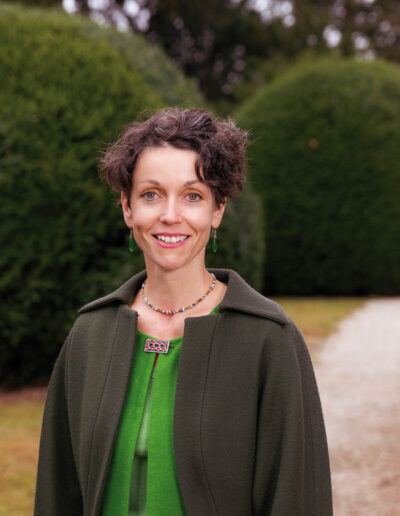In times of insecurity and change, adaptability is essential. Changing our minds and adjusting to new circumstances or beliefs is not always easy, as illustrated by the wonderful story of the Jenkins family.
One day, out of the blue, Mrs Jenkins announced to her husband and children that she was no longer interested in doing the housework. She had decided that enough was enough: she would no longer cook, clean, or manage the household. This sudden change in behaviour came as a shock, especially since Mrs Jenkins had long held traditional views about the roles of a mother and wife. Her family was even more unsettled when she explained that she simply had had enough.
So concerned were they by this shift in mindset that they feared something was seriously wrong with her brain and took her to the family doctor. The doctor took their concerns seriously and referred Mrs Jenkins to a neurologist, who promptly ordered a brain scan. The scan revealed that she had a large meningioma – a benign tumour – in her frontal cortex. The family felt relieved, believing the tumour explained her odd behaviour and that everything would return to normal following surgery.
Neurosurgery successfully removed the meningioma. However, once Mrs Jenkins had recovered, she insisted once again that she was still not interested in doing the housework.
Mrs Jenkins’ change of mind may appear trivial, but this story offers us some valuable insights. Firstly – and humour aside – if a woman decides she no longer wants to be a full-time housewife, not even brain surgery will reverse that decision. More seriously, neurologists often cite this case to show that humans can and do change their minds about deeply held beliefs. It reminds us that we are capable of adapting – as individuals, as a society, or as business leaders. We can change our direction, policies, careers, or strategies.
One model for understanding societal or organisational mindset shifts is the Overton Window. This concept outlines the range of ideas considered acceptable or unacceptable at any given time – and how that range shifts. Named after American policy analyst Joseph Overton, the concept emerged from his work with the Mackinac Center for Public Policy in Michigan, examining which policies a politician could propose without appearing too extreme, depending on public opinion.
Overton died in 2003, but his model was developed into a visual framework showing six stages of acceptance for any idea: from “unthinkable” to “policy”. The transition moves through radical, acceptable, sensible, and popular stages before becoming mainstream. This applies to both negative and positive shifts in thinking. Though often discussed in the context of political extremism, the Overton Window is equally relevant for beneficial societal change, business innovation, and sustainability. It is also known as the “window of discourse”.
It helps explain how ideas such as Trump’s political rise or the increasing popularity of far-right ideologies have shifted from fringe to mainstream. Many wonder: how could people change their minds so drastically? The Overton Window shows how even previously unthinkable ideas can become accepted – or even popular.
Conversely, the growing acceptance of same-sex marriage demonstrates a positive shift. Once seen as unthinkable, it became a radical idea, then acceptable. By the early 2000s, countries like the Netherlands (the first in the world to legalise same-sex marriage) paved the way. Belgium followed in 2003, Spain in 2005, and both Norway and Sweden in 2009. In 2012, Denmark legalised it – 23 years after becoming the first country to recognise same-sex couples legally. Ireland, a traditionally Catholic country, made history in 2015 by becoming the first nation to approve same-sex marriage by popular vote. Today, nearly 43 per cent of the European population lives in jurisdictions where same-sex marriage is legal.
Where the window sits at any one time defines the framework within which shifts in public opinion can occur – in either direction. Changes in societal norms vary in speed depending on the issue, context, or generation. For example, the public’s view on smoking in public spaces evolved gradually – a key insight of the Overton Window: change must often be incremental to become accepted. (Unlike Mrs Jenkins’ sudden rebellion, which was deemed unacceptable!). Change also tends to be most effective when it stems from grassroots movements. (Perhaps Mrs Jenkins had been reading feminist literature?).
The window can also shift backwards – when once-popular policies become politically or culturally unacceptable. This can be seen in responses to climate change, where essential strategies are often met with resistance. Or more recently, Diversity, Equity, and Inclusion (DEI) initiatives, which have moved from mainstream to contested in some corporate contexts.
In an interview with The New York Times, Joseph Lehman of the Mackinac Center said:
“It just explains how ideas come in and out of fashion, the same way that gravity explains why something falls to the Earth. I can use gravity to drop an anvil on your head, but that would be wrong. I could also use gravity to throw you a life preserver – that would be good.”
Above all, the Overton Window gives us hope: the seemingly unthinkable can become the new normal. In Mrs Jenkins’ case, one might imagine she has found a new career and life outside the home – and Mr Jenkins, having undergone his own Overton-style transformation, is now happily doing the housework!

















